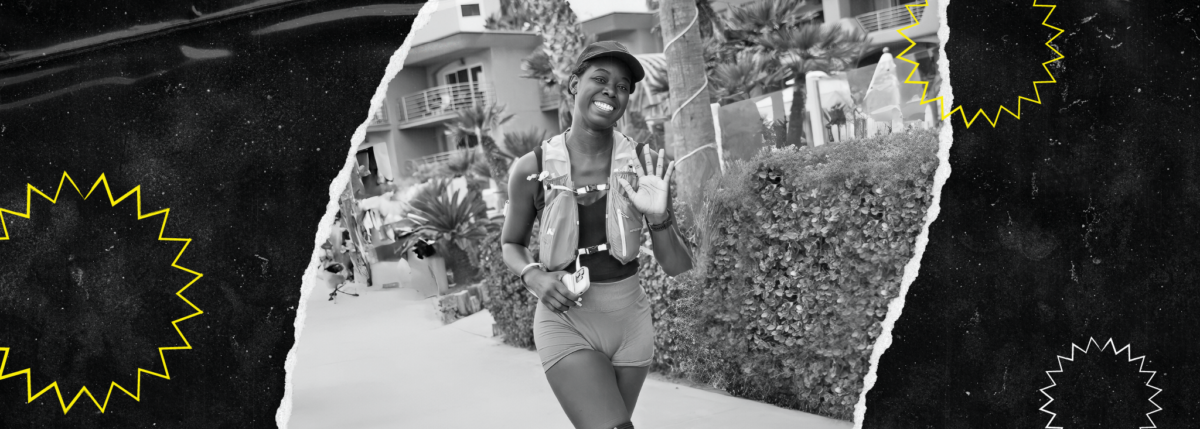A Different Kind of Happiness: Defining My Own Success with Type 2 Diabetes
Written by: T'ara Smith, MS, Nutrition Education
6 minute read
March 3, 2022
Living a happy life with type 2 diabetes, beyond A1C, looks different for everyone. Bill Santos shares what successful management looks like for him.
What does it mean to be successful with type 2 diabetes? Sure, there are clinical guidelines, which encourage people with type 2 to aim for an A1C below 7 percent, as well as monitoring other aspects of your health such as cardiovascular, kidney, or eye health. But, there are nuances to living with type 2 diabetes that won’t be easily gathered into different data points. It’s those nuances that can make a difference in a person’s outlook on their life with diabetes and how they determine what success with type 2 looks like for them.
Bill Santos was diagnosed with type 2 diabetes in 2018 and over the last four years, he’s been active in the diabetes online community to share and gain knowledge about managing it. Bill was also one of Beyond Type 2’s first patient stories, where he shared his experience of his first year with diabetes. In the interview below, Bill updates Beyond Type 2 on his diabetes journey and what it means to define success and happiness with type 2 diabetes for himself, especially during the pandemic.
BT2: Thanks for joining us again, Bill! How have the last several years with type 2 diabetes been for you?
I’ve learned a lot in the last four years and so much has changed for me. I figured out pretty early on that when dealing with that diabetes, I used to get up in the morning and say, ‘All right, I’m going to get up and I’m going to eat good and I’m going to exercise. I’m going to take my medications and I’m going to kick this disease’s butt and it’s going to be great.’ After about three months of that, I realized diabetes is here to stay and it’s not something to beat as a challenge. You can’t wrestle diabetes to the ground every day and think it will eventually get tired of you because it never gets tired. Instead, you’ve got to change your perspective on living with it.
Diabetes management is a skill. I found that if I could master different elements of things, my survivability and my mental ability to deal with this were going to be much better. So, if I could figure out how to marinate a chicken really well that I could put on my salad for lunch, then that was a big deal. I got much more engaged in how I would prepare meals and was excited about trying different spices and flavors. That was a huge turning point for me. What I found is that if you can identify something that you want to try and get much better at, and then work in the rest of what your routine’s going to be, it makes it so much easier long term.
You’re very active on social media, sharing photos of yourself being active at the gym. How has the pandemic impacted your diabetes management?
It certainly affected everybody and my gym shut down. When we started working from home, I took stock of where I was in my diabetes regimen. When I was in the office, I worked in a large building where I could always take advantage of taking the stairs or parking farther away from the building, or if I had a meeting taking the long route to the meeting so I’d get more steps in. How was I going to adjust during COVID?
I didn’t have to commute anymore and living in the Washington DC area, that’s a 45-minute chunk I get back every morning and every afternoon. I decided I’d use that time to do new things, so I took up running and bought a bike. I also live close to two different parks and I developed a bunch of new friendships with other people in the neighborhood.
Also because I had more time at home, I did a little more grilling outdoors—opening up new dining options for myself. Now that I’m back in the office once or twice a week, I’m making adjustments to take advantage of my new flexible schedule.
During COVID, however, I was able to still go to my quarterly appointments, but my A1C fluctuated a bit. It’s remained in a good place. Since I had more time on my hands, I had to be mindful of my snacks and diet and made sure I stayed active.
Success with type 2 diabetes can mean different things, depending on who you ask. What does it mean for you outside of the recommended guidelines?
Part of it is about how I start my day. I always like to start the day with good fasting glucose, which I broadly define as close 100 mg/dL as I can get and ideally below. Some days I’m in that range and some days, I’m not. I don’t judge my days as good or bad. Instead, I’ll look at a few days and try to notice any trends, and go from there. Maybe I’m a little stressed or there’s something else going on.
Another big way I define success is by finding a way to move my body. I don’t have to be running a 5k every day, but I find satisfaction in walking around the block, cleaning the basement, or just finding any way to move around. Eating well is important, too. I’ve become a creature of habit with my breakfast and lunch and as long as I can have an okay dinner, my numbers do well. I also make sure I take my medication regularly and work closely with my healthcare team.
Finally, I have to maintain a positive attitude. I’ve taken an interest in the idea of stages of grief surrounding diabetes. I’ve come to the realization that in getting diagnosed with diabetes, I had to say goodbye to some extent to who I was before I had diabetes. And there’s some grief associated with that, and that’s a very high order, apex emotion. I had to remember who I was while accepting who I am now. You’ve got to have a healthy discussion with yourself about that and that’s part of making sure you’re taking care of yourself and it’s not just about an A1C number.
I remember who I was and what I was doing five years ago and I don’t think I’m fundamentally different, but I don’t let it consume me. I think about what I’ve learned and where my journey’s taken me. I think in a lot of ways I’m for the better for it.
Also, that’s part of being a part of the diabetes community. I know a lot more about my body than I did five years ago. I know when something’s wrong a lot faster. I’m more in touch with who I am and how my body works. I have run farther and faster and longer than I ever thought I could. There are a lot of upsides, there are a lot of positives to where I am, but I think about who I was and where I was before too because it’s a different kind of happiness.
How supportive has the diabetes online community been for you and your efforts to be a diabetes advocate?
Advocacy, I’ve found, is a very high-energy kind of thing. You’ve really got to put some work into it, more than I thought. But the diabetes online community has been really good to me. I’ve gotten a lot out of it. I’ve gotten to meet a lot of really interesting folks from around the world, really literally different countries, all over the United States. So, learning and exchanging ideas with people from all over has really helped me. And I’ve always felt that if I was getting help from other people, I should be giving back to the same community because that would only be right. I have seen some things online where I found bullying in the diabetes community and stood up and said “hey, that’s not right,” and pushed back on folks as polite as I can. I don’t ever really like to get antagonistic.
But you want to confront kind of the myths that are out there about having diabetes and living with diabetes. I found that there were times in advocacy, I found myself doing a lot of me-toos, a lot of likes, but not necessarily saying things. And I felt I’ve had to step it up and do more. And I found that each piece of the online community can be completely different. Instagram is completely different from Twitter, which is different from Facebook and you kind of just have to understand that when you’re participating in those different ways. So, it’s taken some time to learn all of those kinds of things. I’ve got to say, recently what I’ve found that I’ve gotten the most joy out of with advocacy is the relationships that I’ve developed with people in the online community.
I’ve been reaching out to folks and just sending little notes and saying, “Hey, I just want to let you know you inspire me and you really motivate me for what I do. And you may not know that but I wanted to let you know.” Those are just soft little moments that have really meant a lot to me and kind of the responses I’ve gotten back have been fantastic. I think I’ve touched some other people out there and I think that’s great. If we can do that kind of sharing as advocacy kind thing, that’s what I’m trying to do this year a lot of, is just sharing my experiences and knowledge and that’s been a lot of fun.
Need a community of people with type 2 diabetes for support? Join the Beyond Type 2 Community app here, available on iPhone, Android and desktop.
Educational content related to type 2 diabetes is made possible with support from Lilly Diabetes. Editorial control rests solely on Beyond Type 2.

Author
T'ara Smith, MS, Nutrition Education
T’ara was diagnosed with type 2 diabetes in July 2017 at the age of 25. Since her diagnosis, she focused her academic studies and career on diabetes awareness and living a full life with it. She’s excited to have joined the Beyond Type 1 team to continue her work. Two years later, T'ara discovered she'd been misdiagnosed with Type 2 and actually has latent autoimmune diabetes in adults (LADA). Outside the office, T’ara enjoys going to the movies, visiting parks with her dog, listening to BTS and cooking awesome healthy meals. T’ara holds an MS in Nutrition Education from American University.
Related Resources

Jordan Sooter’s journey to running marathons began in college as a way to stay fit....
Read more

Antoine Gibson is no stranger to overcoming challenges. As a saxophonist and marathon runner living...
Read more

Danica Collins not only prepared for one of the most challenging physical events of her...
Read more

